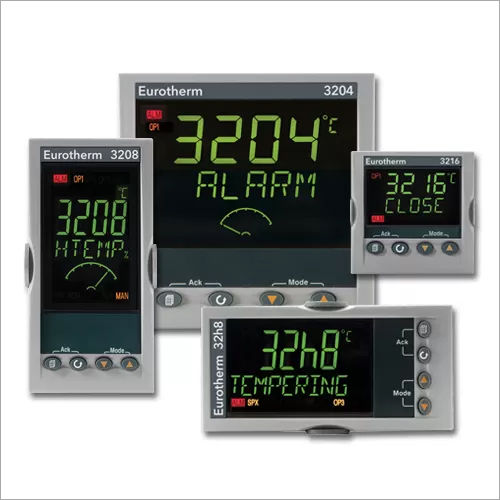
Digital Temperature Controller
15000 INR/Unit
Minimum Order Quantity : 20 Units
Delivery Time : 10 Days
Kolkata, India ![]() GST No.19BCBPR7038D1ZJ
GST No.19BCBPR7038D1ZJ
Call us now
08045802757
Minimum Order Quantity : 20 Units
Delivery Time : 10 Days
Type Electronic
Operate Method Semi Automatic
Exterior Material Stainless Steel
Application Industrial
Supply Ability 5500 Per Month
Payment Terms Cash Advance (CA)
Main Domestic Market All India
Delivery Time 10 Days
An electrical device called a digital temperature controller is used to track and manage temperature in a variety of applications. By taking input from temperature sensors and changing outputs to maintain a particular temperature setpoint, it enables precise and accurate temperature regulation.
1. Temperature Sensing: To determine the current temperature, the controller communicates with temperature sensors such thermocouples, resistance temperature detectors (RTDs), or thermistors. For temperature monitoring, the controller receives feedback from these sensors.
2. Digital temperature controllers have a display and user interface that indicates the setpoint, current temperature, and other pertinent data. They frequently have a user-friendly interface with buttons or a touch screen for simple configuration and temperature setting change.
3. Setpoint Control: Using the controller's interface, users can enter a desired temperature setpoint. To achieve and maintain the intended temperature, the controller compares the setpoint with the actual temperature and modifies the control outputs accordingly.
4. Operate Outputs: To operate external devices like heaters, coolers, or actuators, digital temperature controllers often contain one or more control outputs, such as relay outputs, solid-state relay (SSR) outputs, or analogue outputs (e.g., 4-20mA or 0-10V). Depending on how far the temperature has deviated from the setpoint, the controller will either activate or modify these outputs.
5. PID Control method: To achieve accurate temperature regulation, many digital temperature controllers use the PID (Proportional-Integral-Derivative) control method. For precise temperature management, the PID algorithm continuously evaluates the difference between the setpoint and real temperature and modifies the control outputs accordingly.
6. Digital temperature controllers frequently provide alarm features to notify users when temperatures exceed preset thresholds or when sensor or control malfunctions take place. These alerts can aid in preventing process errors, safety dangers, and equipment damage.
7. Profiles and Programmability: Some sophisticated digital temperature controllers have the ability to programme temperature profiles or time-based temperature adjustments. Applications requiring precise temperature ramping requirements or intricate temperature control sequences can benefit from this.
8. Digital temperature controllers may be able to communicate using RS485, Ethernet, or Modbus protocols. This enables them to be integrated with other systems such as supervisory control and data acquisition (SCADA) systems or building management systems (BMS). This makes system integration, data logging, and remote monitoring easier.
HVAC (heating, ventilation, and air conditioning), industrial operations, laboratory equipment, food processing, and environmental chambers are just a few of the areas where digital temperature controllers are used. They offer accurate temperature control, increased process effectiveness, and protection from temperature-related problems. A digital temperature controller should be chosen based on the application-specific requirements for precision, temperature range, control outputs, and communication.